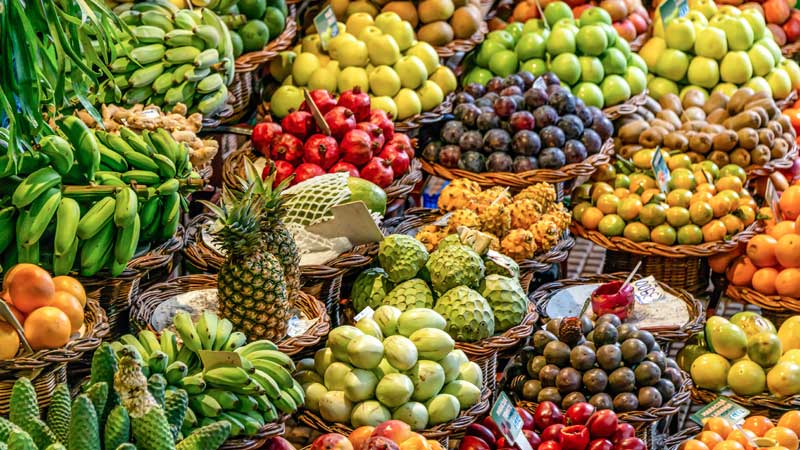What To Know About Mahi Pono Farming
Maui stared at an uncertain future when Alexander & Baldwin, Inc., the region’s longtime sugar growers, opted out of the agricultural business. The situation heightened when the grower sold its large tracts of farmland and irrigation systems to a completely unknown brand-new entity, Mahi Pono.
This corporate stranger that shook the people of Maui was born from a joint venture between a Canadian pension fund and a California-based Pomona Farming.
The goal behind the land takeover was for Mahi Pono to “Growing Maui’s Food Future.” They want to utilize and make the former sugarcane lands productive enough to double Hawaii’s crop production.
Hawaii’s Current Agricultural Production
Despite having a mild all-year planting season that favours plant growth, Hawaii only grows a small percentage of its food. Unfortunately, they source a chunk of their food supply from the rest of the world.
However, this remote island still boasts of being a food basket. It also prides itself on being a leading producer of sugar for a while.
There was a time when sugar and Pineapples were Hawaii’s top crops. But the focal moment came when the state’s last sugar producer closed its doors. The closure marked the end of the sugar-planting era that had lasted for hundreds of years.
Today, the agrochemical corn seed industry is the dominating agricultural sector. Apart from that, there are commercial forestry and macadamia nuts. These plants are all grown primarily for export purposes.
The passing of the sugar and plantation era left the island with abandoned apocalyptic-looking fields. With their green lifeblood-sugar- gone, the island resorted to filling the economic void with other plants.
To actualize the resolution and double agricultural production, the state bought land on all of Hawaii’s islands to lease to farmers. This move was meant to attract large-scale producers who’d help curb importations as well.
Several such big producers are already working on hundreds of acres on projects such as massive greenhouses, medical marijuana, and animal & poultry farms.
How Will This Large Agricultural Project Affect The Environment?
Although such agricultural intensification projects are welcome, what are the odds? Overproduction and land overutilization will increase environmental burdens.
1. Climate Change
Crop irrigation increases water evaporation that impacts the atmospheric pressure conditions. Such instances can not only increase rainfall patterns around the area but also thousands of miles away.
Sadly, the increase in precipitation contributes to the rise in sea levels. This effect explains why Hawaii’s sea levels keep rising.
2. Freshwater Eutrophication
Large-scale farming is heavily dependent on chemical fertilizers. Although these chemicals contribute to the explosive yields, they are environmental pollutants.
The reason is that after application, these fertilizers wash into the soil, then to the groundwater. This effect threatens the purity of freshwater meant for consumption and farming.
3. Marine Eutrophication
The massive agricultural lands act as the source for agricultural chemical runoffs that wash into the sea. The chemicals cause a concentration of nutrients that change the structure of the water bodies. Such structures include the overproduction of algae that threaten Hawaii’s coral reefs.
4. Over-Irrigation
Unfortunately, Hawaii’s crop production projects demand thorough irrigation to support large harvest yields. But then, it means that the production farms direct a great deal of irrigating water onto the farmland.
This large scale irrigation requires diversion of fresh water with over bound effects on the immediate environment. For instance, it causes depletion of downstream rivers and groundwater.
Apart from that, irrigation causes waterlogging that causes the soils to absorb excess salts. Such compositions adversely affect plant life, causing the vegetation to wilt and die.
And, irrigation also erodes the coastlines. Check this site for more information about the importance of soil quality for vegetation.
5. Livestock Overgrazing
Cattle rearing is among Hawaii’s top agricultural projects. This activity demands vast amounts of farming land for use.
With land being used primarily as pasture for livestock, stretches of lands are consumed so extensively that grasses and other vegetation fail to regenerate. This is because when animals overgraze, they damage the plant’s rooting system so much that they die.
Worse still, dung from animal farming is responsible for the emission of greenhouse gases like methane that cause global warming.
For Good or For Profit?
After almost collapsing during the final days of Hawaii’s sugar mills, what the island needed is to establish a new source of the economic project.
For this reason, adopting vast agricultural production projects as the supporting leg for food security means well for Hawaii. Such projects will not only ensure self-reliance but also generate additional income for the state.
This idea will also ensure that there are job creations for the Mauians and everyone in Hawaii. And the best of it all, it will bring an end to the long chase for water that was otherwise diverted to feed the cane farms.
While at it, however, the state should ensure that they make it right for the people. The plans shouldn’t be profit-oriented only. They should curate projects that are community-bound.
The projects should include the community’s input. Apart from that, they should project people’s interests rather than income for the country. They should provide residents with a fresh start after the previous fate.
The Future Of Agriculture In Maui
The people of Maui are skeptical yet hopeful about drawing from tradition and embracing the new passion. Nonetheless, agriculture will continue shaping Maui’s future if the projects employ innovative farming technologies.

